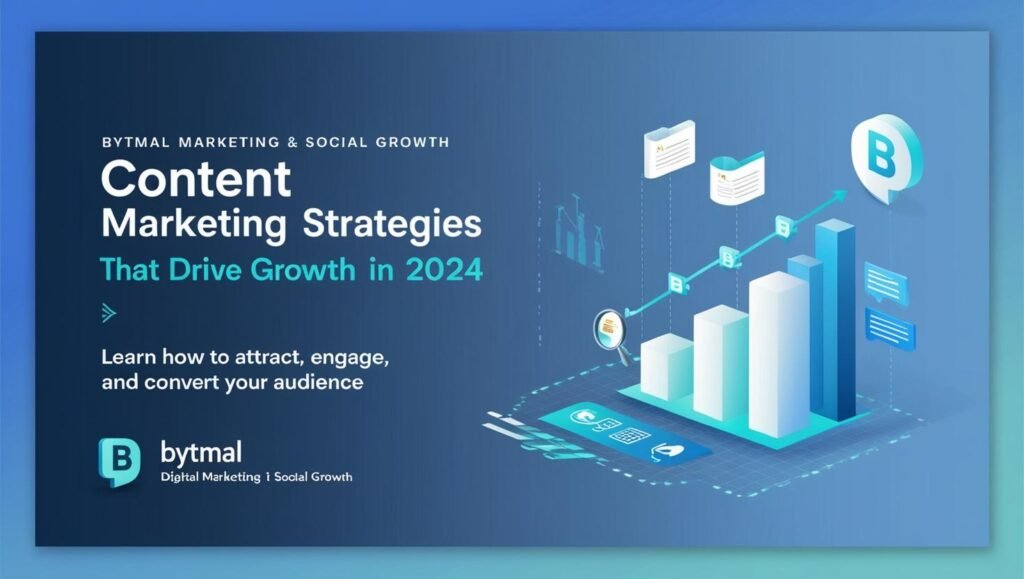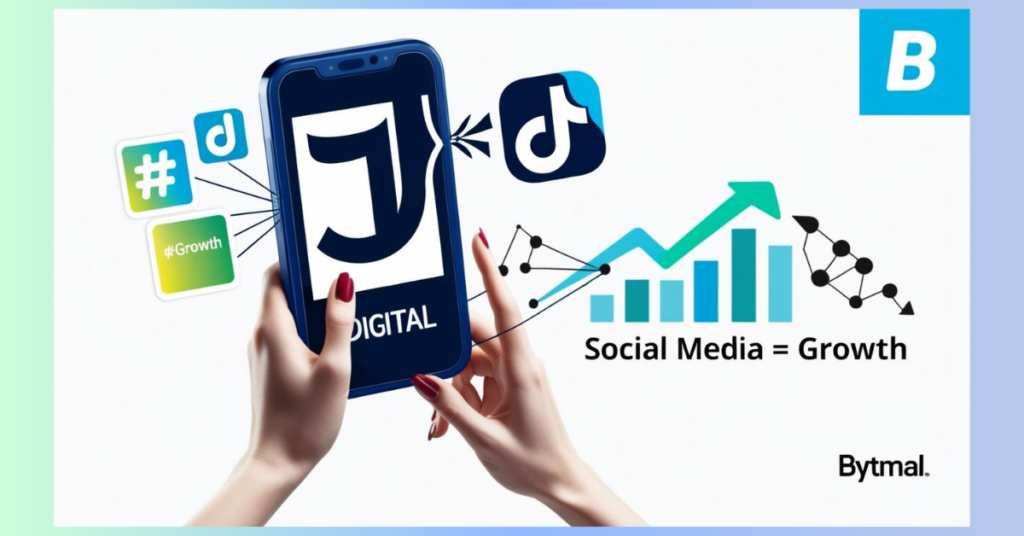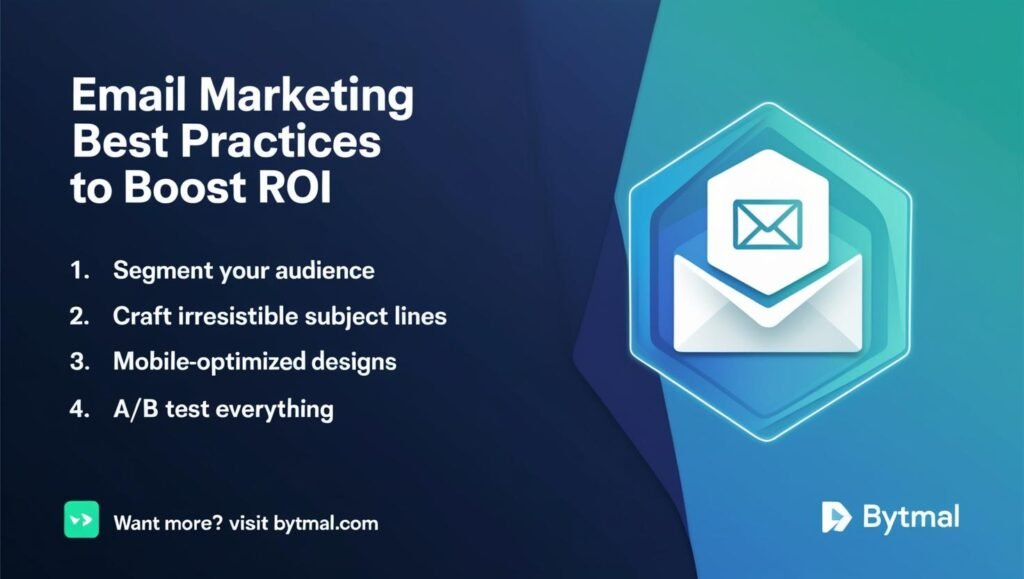Introduction to Digital Marketing
Digital marketing represents a crucial evolution in the way businesses connect with their customers. As technology has advanced, traditional marketing methods have gradually been overshadowed by digital strategies. In today’s business landscape, where almost everyone is online, it is imperative for companies to harness the power of digital marketing to remain competitive and effectively engage with their target audience.
The importance of digital marketing has surged with the proliferation of the internet and mobile devices. Consumers now rely heavily on digital channels to gather information, make purchases, and interact with brands. Consequently, businesses that neglect to implement digital marketing strategies risk losing significant market share to more agile competitors. By adopting these modern tactics, companies can enhance their visibility, streamline their communications, and better cater to the preferences of their clientele.
Digital marketing encompasses a wide array of tools and techniques, including search engine optimization (SEO), social media marketing, content marketing, email marketing, and pay-per-click (PPC) advertising. Each of these methods plays a unique role in promoting products and services, driving traffic, and building brand loyalty. Moreover, the data-driven nature of digital marketing allows businesses to monitor their performance and refine their strategies based on measurable outcomes. This adaptability is a distinct advantage over traditional marketing, where results are often harder to quantify.
Furthermore, as audiences become more diverse and sophisticated, the demand for personalized marketing experiences grows. Digital marketing enables businesses to segment their target audience and tailor their messaging, thus fostering deeper connections with consumers. This personalization enhances customer satisfaction and loyalty, proving that digital marketing is not merely an option but a necessity for any business aiming for growth in the contemporary marketplace.
Understanding Your Target Audience
In the realm of digital marketing, grasping the dynamics of your target audience is not just advantageous; it is essential for the success of your strategies. Identifying and understanding your target audience holds significance as it guides businesses in tailoring their marketing efforts to meet the specific needs and preferences of potential customers. A well-defined audience profile allows marketers to communicate more effectively and become relevant in a crowded marketplace.

One of the primary techniques for gaining insights into your audience is through market research. This involves collecting and analyzing data about consumers’ habits, preferences, and demographics. Surveys, focus groups, and interviews serve as practical avenues for gathering qualitative data. Additionally, leveraging digital tools, such as Google Analytics, provides quantitative insights into customer behavior online. Understanding factors like where your audience resides, what devices they use, and how they interact with your content can greatly enhance your marketing strategies.
Creating buyer personas is another powerful approach to understanding your target audience. A buyer persona is a semi-fictional representation of your ideal customer based on real data and educated assumptions about customer demographics, behaviors, and motivations. By developing detailed personas, marketers can craft messages that resonate deeply, thereby improving engagement rates. Furthermore, analyzing customer behavior through data analytics identifies trends and patterns that provide a clearer picture of what your audience values.
Incorporating these techniques enables businesses to achieve precise targeting in their marketing initiatives. By focusing on the specific needs of your audience, you can optimize your marketing efforts, enhance customer engagement, and ultimately drive growth. A thorough understanding of your target audience lays the foundation for developing digital marketing strategies that yield results.
Content Marketing Strategies
In the realm of digital marketing, content is often heralded as the cornerstone of effective engagement strategies. Businesses aiming for growth must harness the power of content marketing to not only attract potential customers but also to retain their loyalty. To achieve this, companies should consider a multifaceted approach, integrating various forms of content such as blog posts, videos, infographics, and podcasts.
Blog posts serve as a fundamental element of content marketing, providing an avenue for businesses to share insights, demonstrate expertise, and connect with their audience. Informative and engaging articles can enhance a brand’s visibility through search engine optimization (SEO) techniques, making it easier for prospective customers to find relevant information. Regularly updated blogs can also improve organic traffic and foster community interaction.
Videos, on the other hand, have emerged as one of the most dynamic tools within digital marketing. They encapsulate complex ideas into digestible formats that can be shared across various platforms. Engaging video content encourages users to spend more time on the website, thereby increasing the chances of conversion. Statistics show that consumers retain information better from videos compared to text, underscoring their importance in content strategies.

Infographics offer a visually appealing method for presenting data and information. They simplify complex concepts, making them more accessible to a broader audience. By incorporating infographics into content marketing strategies, businesses can enhance engagement rates and improve shareability on social platforms.
Finally, podcasts provide an intimate medium for brands to connect with their audience. By discussing topics of interest, interviewing experts, or sharing customer stories, businesses can create a loyal listener base that values their insights. This auditory content not only strengthens relationships but also builds a brand’s credibility in its field.
By implementing a diverse array of content marketing strategies, businesses can provide valuable, relevant content that meets the needs of their target audience, ultimately driving growth and sustainability in today’s competitive digital landscape.
Social Media Marketing Techniques
In the realm of digital marketing, social media platforms have become indispensable tools for businesses seeking to enhance their online presence and drive growth. Major platforms like Facebook, Instagram, Twitter, and LinkedIn offer unique opportunities for brands to engage with their audience, tailoring content to fit the distinct nature of each platform. Facebook’s expansive user base enables businesses to reach a broad demographic, while Instagram’s visual-centric format attracts creatives and lifestyle brands. Meanwhile, Twitter facilitates real-time engagement and updates, making it ideal for customer service and communication, while LinkedIn serves the professional community, allowing B2B marketing efforts to flourish.
To create engaging posts that resonate with users, it is imperative to understand your target audience and their preferences. Content must be relevant, informative, and visually appealing. Incorporating a mix of formats—such as images, videos, and infographics—can enhance engagement rates significantly. Additionally, storytelling is a critical technique; sharing authentic stories about the brand, its values, or customer experiences can foster a connection with the audience. Posts that invite interaction, such as questions or polls, can further enhance engagement, promoting a sense of community among followers.
Utilizing social media ads is another effective method for maximizing reach and visibility. Platforms like Facebook and Instagram offer sophisticated targeting options that allow businesses to tailor their ads to specific demographics, behaviors, and interests. This precision increases the likelihood of attracting the right audience, thus driving traffic to websites or landing pages. As brands build an online community, fostering two-way communication is essential. Engaging with followers through comments, messages, and live sessions can enhance brand loyalty and trust.
Overall, integrating these social media marketing techniques can effectively boost brand awareness, stimulate customer engagement, and ultimately catalyze business growth in the digital landscape.

Search Engine Optimization (SEO) Essentials
Search Engine Optimization (SEO) is a fundamental component of digital marketing that enhances online visibility and drives organic traffic to websites. By optimizing content for search engines, businesses can improve their rankings in search results, making it easier for potential customers to find them. One of the first steps in an effective SEO strategy involves keyword research, which helps identify the terms and phrases that potential customers are using to search for products or services. Utilizing tools such as Google Keyword Planner or SEMrush can provide valuable insights into keyword trends and competition, helping businesses select the most relevant keywords to target.
On-page optimization is another crucial aspect, where businesses need to ensure that their websites are structured in a way that search engines can easily crawl and index. This includes optimizing title tags, meta descriptions, header tags, and ensuring that the content is high-quality and relevant to the target keywords. Additionally, incorporating internal linking improves navigation and increases the likelihood of keeping visitors on the site longer, which can positively impact search rankings.
Off-page optimization, primarily focused on building backlinks, is equally important in achieving a high search engine ranking. Backlinks from authoritative sites signal to search engines that your content is credible and useful. Strategies for acquiring quality backlinks include guest blogging, engaging in partnerships with other businesses, and creating shareable infographics or content. However, it is essential to avoid common SEO mistakes, such as keyword stuffing, which can lead to penalties from search engines. Instead, focus on creating valuable, relevant content that meets the needs of users. By understanding and implementing these SEO essentials, businesses can significantly enhance their online presence and contribute to overall growth.
Pay-Per-Click Advertising (PPC) Insights
Pay-Per-Click (PPC) advertising is a strategic approach that allows businesses to drive targeted traffic to their websites by paying for clicks on their ads. Unlike traditional advertising methods, such as print or television ads, PPC enables companies to reach consumers who are actively searching for specific products or services. This system operates primarily on platforms like Google Ads and Facebook Ads, which facilitate the creation and distribution of advertisements tailored to a wide array of demographics.
The core function of PPC involves bidding on keywords that potential customers are likely to enter during their online searches. When users click on these ads, they are directed to the advertiser’s website, resulting in valuable traffic. One of the significant advantages of PPC advertising is its ability to provide immediate results, allowing businesses to attract visitors to their site shortly after launching a campaign. Additionally, PPC campaigns offer extensive targeting options, enabling businesses to reach specific market segments based on various factors, including location, age, and online behavior.
To create successful PPC campaigns, businesses should focus on several key elements. First, selecting the right keywords is crucial, as they must be relevant to the products or services being offered. Second, crafting compelling ad copy that resonates with the target audience can significantly increase click-through rates. Lastly, refining landing pages to ensure they align with ad content is essential for converting visitors into customers.
Another important aspect of PPC advertising is the necessity for tracking and analyzing results. By utilizing tools such as Google Analytics, businesses can monitor the performance of their campaigns and adjust strategies accordingly. This data-driven approach enables the continuous optimization of PPC efforts and long-term growth in online visibility and sales.
Email Marketing Best Practices
Email marketing continues to be an invaluable asset for businesses looking to foster customer relationships and drive growth. To leverage this tool effectively, organizations should adhere to several best practices that enhance their email marketing efforts.
First and foremost, building a robust email list is crucial. Businesses should focus on acquiring subscribers through multiple channels, including their websites, social media platforms, and in-store promotions. Utilizing lead magnets such as downloadable content, discounts, or free trials can incentivize potential customers to share their email addresses. Importantly, it is essential to obtain explicit consent from subscribers to comply with regulations like the General Data Protection Regulation (GDPR) and the CAN-SPAM Act.
Once a quality email list is established, crafting compelling content becomes the focal point of email marketing. The subject line, which serves as the initial point of engagement, must be enticing enough to encourage recipients to open the email. Additionally, the body of the email should deliver valuable information, whether it be informative articles, updates on company offerings, or promotional deals. It is advisable to keep paragraphs concise and include clear calls to action (CTAs) that guide the reader towards the desired action.
Successful email marketing also involves segmenting the audience to tailor content to specific groups within the subscriber list. By analyzing data such as demographics, purchasing behavior, and engagement patterns, businesses can create personalized emails that resonate better with the recipient’s interests. This level of customization not only enhances engagement but also significantly increases the likelihood of conversions.

Lastly, continuous optimization of email campaigns through A/B testing can yield valuable insights. Businesses should experiment with various subject lines, content formats, and sending times to determine what resonates best with their audience. Through diligent tracking of performance metrics, marketers can refine their strategies for maximum impact and effectiveness.
Analyzing and Measuring Success
In the ever-evolving landscape of digital marketing, the ability to analyze and measure success is crucial for businesses aiming for growth. Tracking marketing efforts allows organizations to gain insights into their performance, understand customer behavior, and refine strategies to enhance effectiveness. To achieve this, companies often rely on key performance indicators (KPIs) that help gauge the success of their initiatives.
KPIs serve as measurable values that indicate how effectively a business is achieving its objectives. Common digital marketing KPIs include conversion rates, click-through rates (CTR), customer acquisition cost (CAC), and return on investment (ROI). For instance, conversion rates help businesses assess the percentage of users who complete a desired action, such as making a purchase or signing up for a newsletter. By monitoring these metrics, organizations can determine which marketing tactics are delivering results and which require adjustment.
In addition to KPIs, businesses can leverage various analytics tools to track their digital marketing performance. Tools such as Google Analytics, HubSpot, and SEMrush provide insights into website traffic, user engagement, and campaign effectiveness. Utilizing these resources enables companies to gather data on how customers interact with their content, identify trends, and evaluate the impact of their marketing efforts across different channels.
Analyzing this data is essential for making informed decisions. For instance, if a particular marketing campaign is not achieving desired results, businesses can use insights gathered from analytics tools to adjust their strategies. This might involve altering ad placements or targeting different audience segments, ultimately maximizing ROI. By maintaining a data-driven approach and consistently analyzing performance, businesses can adapt to market changes and enhance their digital marketing efforts, leading to sustained growth.
Staying Ahead of Trends in Digital Marketing
In the ever-evolving realm of digital marketing, businesses must prioritize staying current with emerging trends and technologies to retain a competitive edge. The digital landscape is rapidly transforming, influenced by diverse factors including consumer behavior, technological advancements, and algorithm changes. Organizations that embrace a proactive approach to these developments can optimize their marketing strategies for better engagement and higher conversion rates.
One of the most significant trends in digital marketing is the rise of artificial intelligence (AI). AI is not only revolutionizing data analysis but also personalizing customer interactions through advanced targeting mechanisms. By leveraging machine learning and predictive analytics, companies can create highly tailored marketing campaigns that resonate with their audience, thus enhancing customer experiences and driving sales. Moreover, the integration of chatbots in customer service has streamlined communication, allowing businesses to respond to inquiries around the clock.
Another important trend to consider is the growing significance of video marketing. As more consumers turn to video for information and entertainment, businesses must adapt their content strategies to include video formats. This could involve creating informative tutorials, product demonstrations, or engaging stories that connect with audiences on a personal level. Platforms such as TikTok and Instagram have redefined the way brands share video content, emphasizing authenticity and creativity.
Furthermore, businesses should remain vigilant about the impact of social media and its evolving algorithms. Staying informed about shifts in platform preferences and user engagement patterns can help businesses tailor their messaging and media strategies accordingly. Regularly reviewing analytics and engaging with industry thought leaders can provide insights into effective strategies and emerging tools. Continuous learning is crucial; this can be achieved by attending webinars, participating in workshops, and reading relevant literature within the field.
In conclusion, by staying attuned to digital marketing trends and adopting a proactive attitude towards learning and adaptation, businesses can navigate the complexities of the digital landscape and drive sustainable growth.

